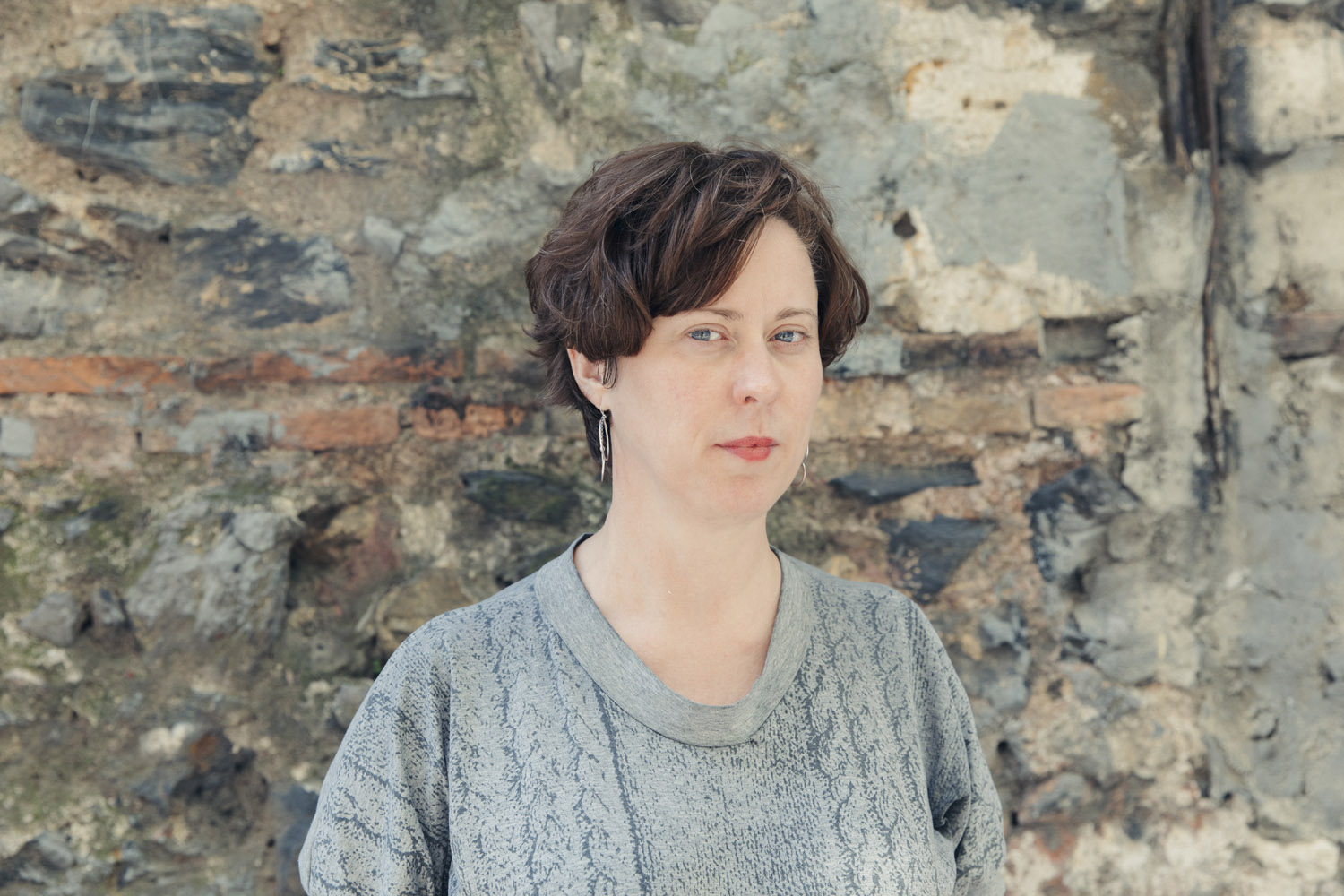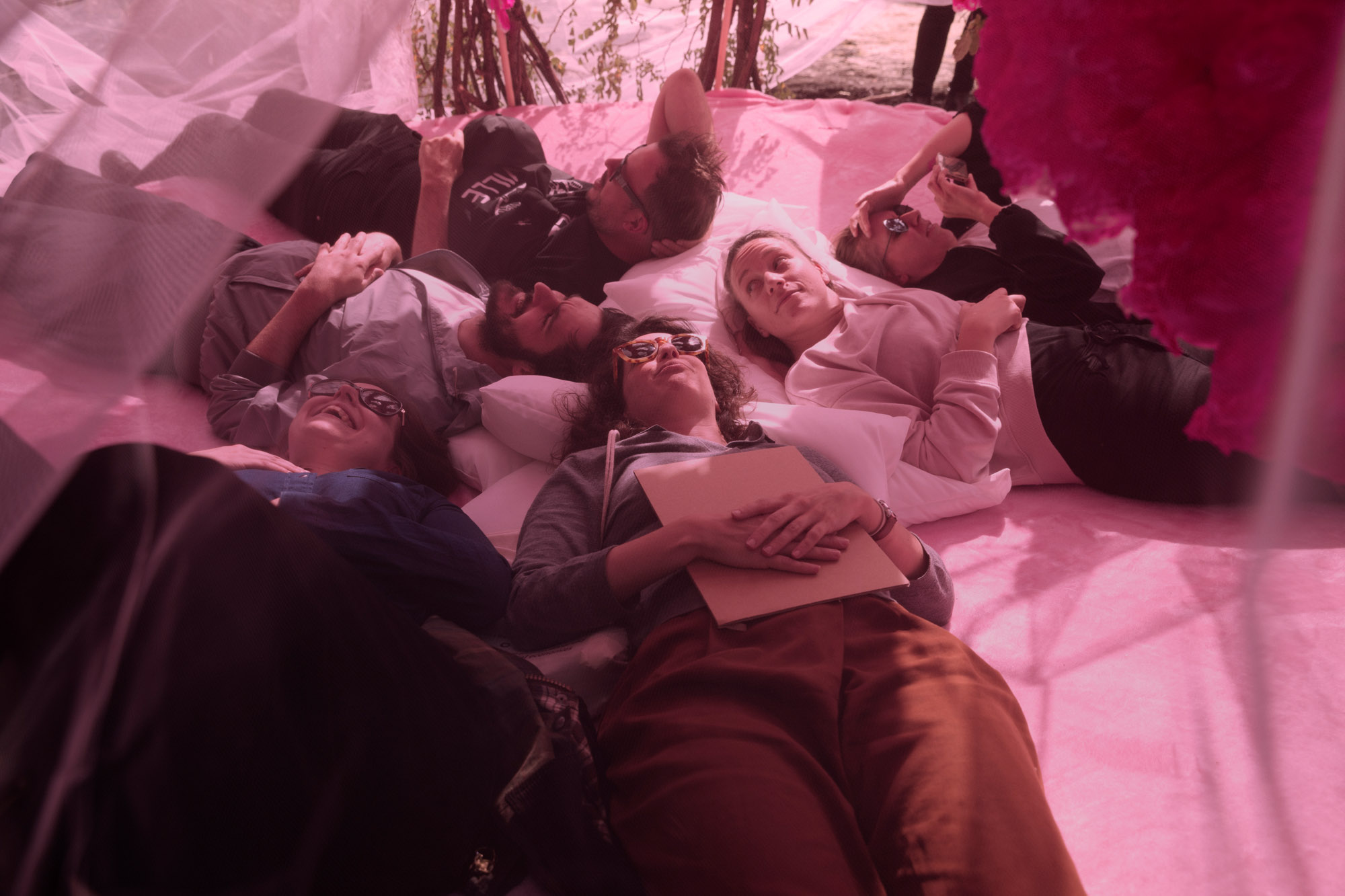Listening = Resonance = Inter-relationality = Care
Thinking through the notion of listening, its affectivity and relationality, listening can be contemplated as caring; caring for oneself, the other and for one’s relational surroundings. Listening implies creating a mutual space, bridging the internal and external world, fostering resonance, inter-relationality and interconnectedness.
On the Notion and Politics of Listening
Every contact leaves a trace.
– Edmond Locard
When reflecting on the notion and politics of listening, it is crucial to consider spatial and sociopolitical relations, in particular, the relation of the self to the shared space and the surroundings. In Helmuth Plessner’s bio-philosophical understanding, “a living being […] is placed in the border between its body and a corresponding environment. Only first when a living organism takes up a relation to its border, does it become open (in its own characteristic way) to what lies outside and to what lies inside. Only then does it allow its environment to appear in it and it to appear in its environment.”
Foucault describes the relation of the self to itself in terms of its moral agency as ethics and practice, a self-forming activity that allows the self to subject itself to a set of moral recommendations. Part of this practice, the care of the self, involves, for example, the ancient form of speech called parrhesia, in which one expresses one’s subjectivity – the duty of speaking the truth as an act of freedom, even if it means criticising oneself or another, even if it means putting oneself in danger.
When the border of the self is transgressed or extended into the outside environment through sense-based information – including aural information – a relationship and resonance between the self and its surroundings can be established. As Hans-Peter Krüger notes: “Singularity does not make any sense without its semiotic contrast of plurality. And, instead of merely thinking about plurality with the best of intentions, the consequences of living plurality prevent us from using force against one another. Thus, in order to coordinate contingencies, we need as a common minimum a procedure for publicly finding out the best currently available way towards a common future.”
Despite the dominant visual and linguistic understanding of today’s culture, Jean-Luc Nancy argues that “the sonorous […] outweighs form”: “It does not dissolve it, but rather enlarges it; it gives it an amplitude, a density, and a vibration or an undulation whose outline never does anything but approach. The visual persists until its disappearance; the sonorous appears and fades away into its permanence.”
Focusing on the sonorous obliges us to reconsider the aesthetic object in relation to the multisensory realm and to question representations of what sonic stimulation might communicate as information. It also creates a relation and a correspondence to the self, to the other, and to the outside world. Seth Kim-Cohen makes the point: “Lyotard’s equation of the sublime with postmodern aesthetics signals a different approach to the question of representation. The sublime object is no longer conceived strictly as the product of nature, as in mountains, oceans, and earthquakes, nor strictly as a product of the boundlessness of time and space. The sublime object, as it is now understood, is just as likely to be the product of human intervention.”
I would assume that social space is more sonic than visual. Communication is more precise acoustically than just visually.
– Haroon Mirza
In the Old English word hlysnan, “to listen”, the focus is on the notions of attention and intent; it refers to an active act not merely of hearing, but of hearing with intent. In Modern English, too, while the verb to hear usually refers to automatic or passive sound perception, the verb to listen connotes intentional or purposeful use of the sense of hearing. It implies intensified concentration and awareness of what one is listening to. The French word entendre carries both meanings: to hear but also to understand what is heard.
Kim-Cohen stresses the “inter-textual nature” of sound, an “aboutness” that “allows for sound’s interactions with linguistic, ontological, epistemological, social, and political signification.” He also points out that listening is not about the “sound-in-itself” or “the solipsism of the internal voice”, but means multiplying the singularity of perception into the plurality of experience, which extends into “a conversation with the cross talk of the world.” […]
_ Text contribution by Berit Fischer. We invited Berit to join an internal workshop leading up to the Making Futures School. Berit brought to us aspects of care, politics of affects and practices of restoration.
_
1. An excerpt of the essay On the Notions and Politics of Listening by Berit Fischer
(originally published in: [hlysnan] The Notion and Politics of Listening, Berit Fischer (ed.). Luxembourg: Casino Luxembourg – Forum d’art contemporain, 2014, pp. 9–18) on the occasion of the exhibition, series of performances and publication called [hlysnan] The Notion and Politics of Listening, curated by Berit Fischer and Kevin Muhlen at Casino Luxembourg – Forum d’art contemporain in 2014. http://www.casino-luxembourg.lu/en/Exhibitions/Hlysnan-The-Notion-and-Politics-of-Listening
2. This statement, known as Locard’s exchange principle, is one of the basic tenets of forensic science; it was formulated by Edmond Locard (1877–1966), one of the founders of the field.
3. The Helmut Plessner Society, “The Thought of Helmut Plessner”, http://www.helmuth-plessner.de/seiten/seite.php?layout=bildhome&inhalt=engl. Accessed on 24 March 2014.
4. See Michel Foucault, Fearless Speech, ed. Joseph Pearson, Los Angeles: Semiotext(e), 2001, pp. 11–20; see also Michel Foucault, The Government of Self and Others: Lectures at the Collège de France 1982–1983, trans. Graham Burchell (New York: Palgrave MacMillan, 2010), pp. 66–67.
5. Hans-Peter Krüger, “The Public Nature of Human Beings. Parallels between Classical Pragmatisms and Helmuth Plessner’s Philosophical Anthropology,” Iris: European Journal of Philosophy and Public Debate (Florence), vol. 1 (2009), p. 202.
6. Jean-Luc Nancy, Listening, trans. Charlotte Mandell, Bronx (New York.: Fordham University Press, 2007), p. 2; originally published in French in 2002.
7. Seth Kim-Cohen, In the Blink of an Ear: Toward a Non-Cochlear Sonic Art (New York: Continuum, 2009), p. 219.
8. Artist statement, in: Barbara London, Soundings, A Contemporary Score (New York: Modern Museum of Art, 2013), p.48.
9. Kim-Cohen, In the Blink of an Ear, p. xvii.
10. Ibid., pp. xxii–xxiii.



